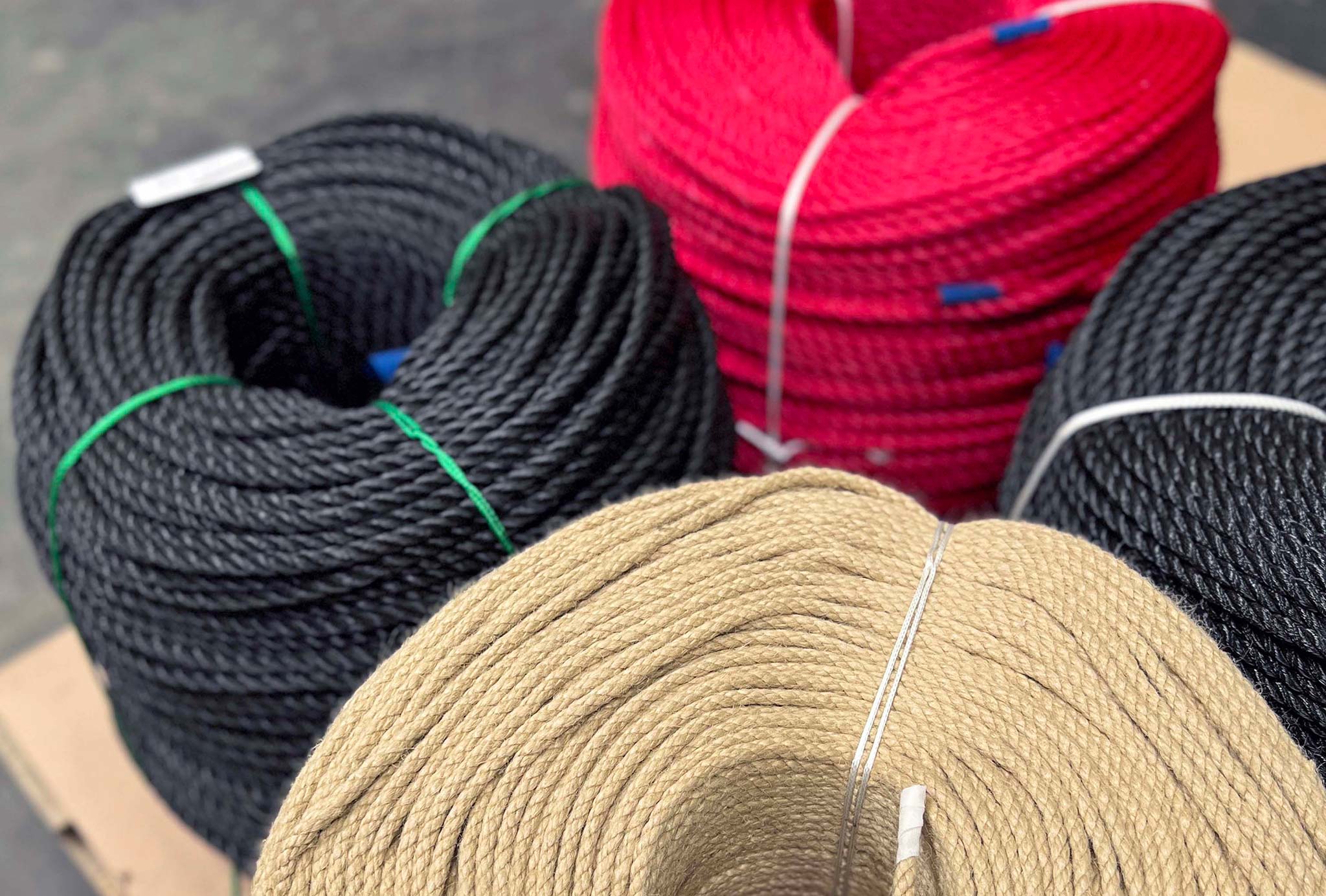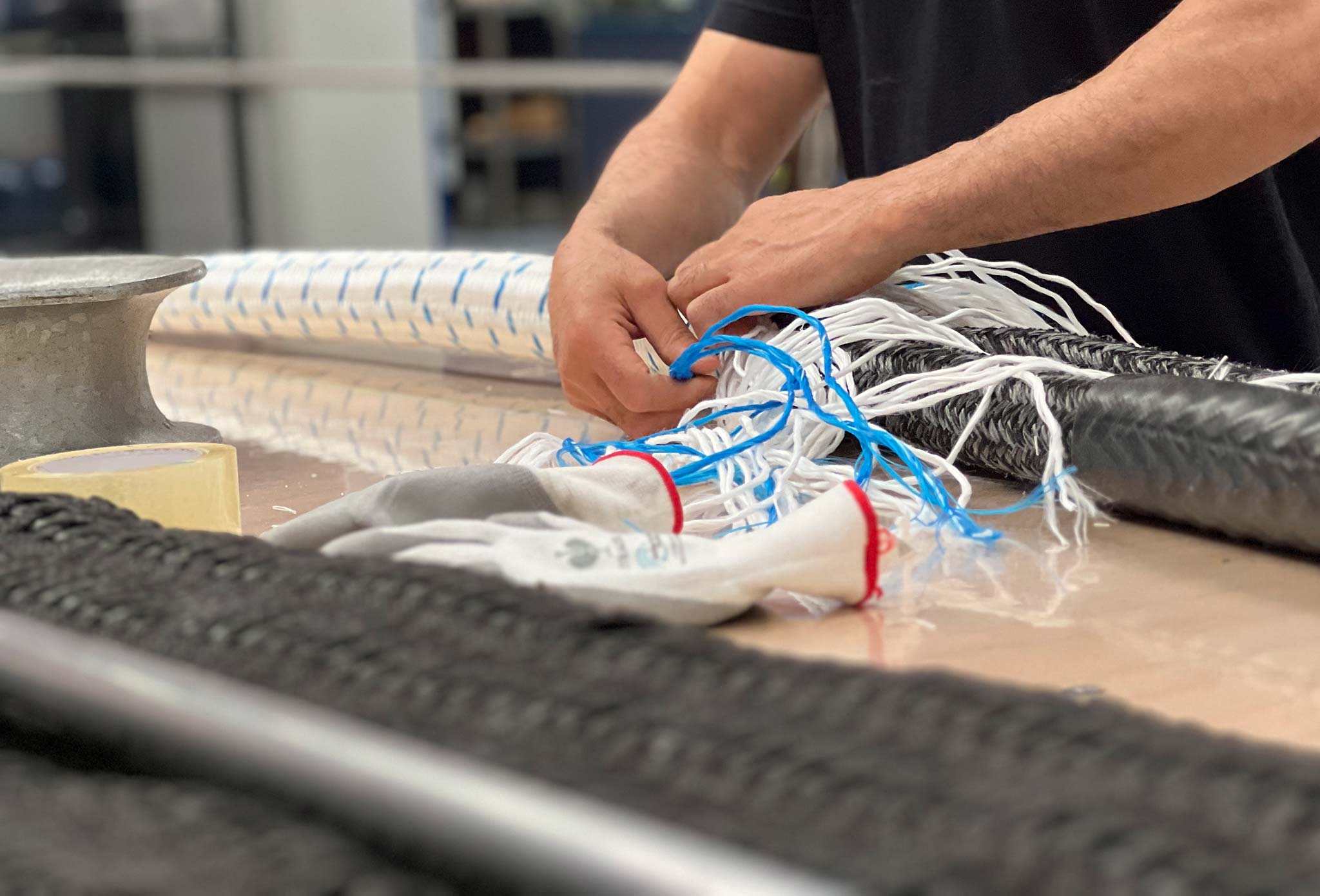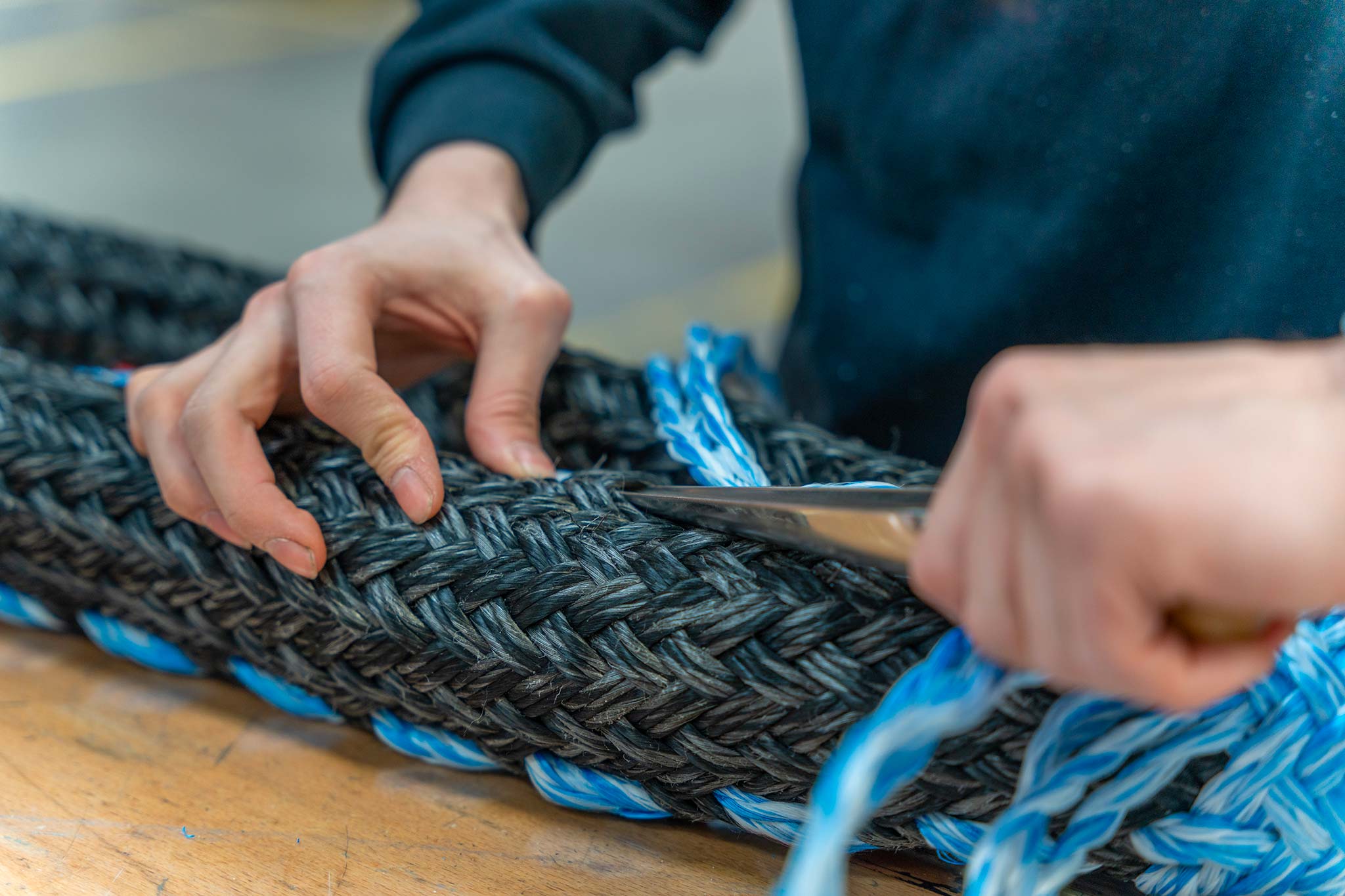
Artists Christo and Jeanne-Claude earned global recognition for their massive sculptures and installations, many of which involved wrapping famous buildings and bridges in colorful fabric. Although they didn’t live to see it complete, the wrapping of the Arc de Triomphe in Paris in 2021 was among their best-known accomplishments: nearly 269,100 square feet of silvery blue fabric painstakingly folded over and around the monument, held fast with more than 9,840 feet of bright-red rope and matching fittings. Thousands of people came out to marvel at the installation over a two-week period.
If only Georg Gleistein, who established a rope-making factory in Bremen, Germany, 197 years prior, could have seen it.

Surely, he’d have been amazed that subsequent generations of his family were involved in the making of those red riggings, in part because of their experience tailor-making durable ropes for superyachts, commercial ships and cruise-ship customers like Disney Cruise Lines, along with a host of other purposes and industries.
His family maintains the business in a far larger facility in Bremen than he opened, with two additional factories in The Netherlands and Slovakia. Together, they have more than 204,500 square feet of production space and make more than 2,755 tons of advanced-fiber ropes every year, through a combination of time-honored hand manufacturing and high-tech machinery.
Currently in the hands of the eighth generation of descendants, Gleistein is the oldest family-run industrial company in Bremen—a city that yet another long-established, family-run company, Lürssen, calls home. As the story goes, Georg Gleistein’s wife chided him for being away too often in his duties as a ship captain. So, he opened the factory with his son in 1824, primarily serving maritime and agricultural customers.
The building was sizable for the time: 1,640 feet long. Equally sizable were the maximum lengths of rope the craftspeople could produce: about 655 feet.

Just one machine today with a footprint of about 66 feet can produce, in mere minutes, triple-braided rope the same length as that original building. The 2,755 tons of ropes now produced annually, including large diameters up to about 5 inches and some with 12-strand braids, are enough to wrap around the Earth’s equator three times. This isn’t to imply that machines have taken over—though, Klaus Walther, Gleistein’s managing director, does like to joke, “My hobby is buying machines.”
Hand-splicing goes on every day in Bremen thanks to about 30 people. Just as they calculated and measured the lengths of each rope for Christo and Jeanne-Claude while coordinating the colors to meet the artists’ specifications, these craftspeople twist and weave a variety of dimensions and hues depending on what each customer wants.
Some of those customers are owners of the biggest yachts afloat. Forty-five of the 55 largest private yachts in the world, all in excess of 354 feet long, rely on Gleistein for mooring lines and more.

Notably, Gleistein’s first superyacht customer exceeding about 300 feet, the Lürssen Octopus, is still loyal after about 20 years—and still using some of the original ropes. While that’s a testament to how well the crew takes care of the gear, it also speaks to how the company researches and develops reliable solutions.
“You pay more in the beginning, but save more in the end,” Walther says. In that same vein, the advice he gives to customers is pretty simple: “Invest, rather than spend, money.”
Whether it’s mooring lines for a motoryacht or rigging for a sailing yacht, Gleistein’s team regularly researches materials and technology to improve the company’s offerings. This approach is in the company’s DNA. Walther’s grandfather, for instance, began experimenting with nylon in the 1950s, making him an early adopter of the fiber for ropes. Additionally, Gleistein switched to high-modulus fibers in the 1980s. A few years ago, it developed a mooring rope made entirely of recycled PET, a type of plastic made from recycled soda bottles and food containers. It also has a rope with a core composed of bio-based fibers, protected by a recycled polyester cover. Each iteration of high-tech materials allows for thinner-diameter ropes without compromising strength.

The process also allows the replacement of other materials. For years, tender davits have employed wire for hoisting. The wire handles lefty loads, but oil lubricating the davit system drips onto the tenders. Gleistein developed a rope as an exact substitute—no need to modify the davit system, no mess and higher resistance to bending fatigue. That rope earned DNV classification society approval in 2014 for manned tenders. It’s the only rope with class approval for this purpose.
Whether making hoisting ropes, mooring lines, helipad guardrails or awning ropes, Gleistein researches and tests everything in-house. It has its own break-testing lab, a dedicated room on the manufacturing floor in Bremen. Lengths of ropes undergo up to about 330 tons of force, depending on their purpose, being stretched and pulled to see how they hold up. For customers requiring higher stresses, Gleistein has a network of partners.

Gleistein is also looking to the future. The company calculates the carbon footprint of every customer’s ropes, regardless of material. For those seeking less reliance on synthetics, it offers a rope where the raw base material is derived from wood. That wood is also certified as coming from responsibly managed forests. Gleistein’s testing shows the fibers provide the same strength and reliability as synthetic counterparts.
The company’s first digital product, originally developed for commercial customers to better monitor their ropes’ condition, is now being made available to yacht crew. The Gleistein tracking system relies on a combination of crew-uploaded information and its own data. It can display a layout of a yacht’s deck with the winches, allowing crew to click a location to learn when they last inspected or replaced the corresponding rope. The tracking system can also alert the crew to the rope likely still remaining in acceptable condition or possibly being at risk of significant damage.
The system “knows” each rope’s status because Gleistein documents everything it makes with tracking numbers and the production date. Walther expects the tracking system’s use to grow among crew because of a SOLAS regulation in effect since January 2024. It requires all vessels to inspect and maintain their ropes, further documenting a line-management plan.

With warehouses stacked floor-to-ceiling with raw materials and some semi-finished products, and a production floor with machines braiding fibers at a dizzying pace from as many as 40 bobbins, Gleistein’s German headquarters offers insight into an age-old need made in a modern way. Yet, few people other than the crews who quite literally know their ropes pay much, if any, attention.
“This is a product that is not entirely appreciated by the market anymore,” Walther says.
It’s tough being in a business where your product isn’t exactly sexy, the way superyacht designs are.
Then again, Christo and Jeanne-Claude changed perceptions of rope. So maybe there’s still hope.
Spring 2025

Latest News
For Sale! 2016 Sea Ray 350 Sundancer – $180,000
Reel Deal Yacht is pleased to feature a meticulously maintained 2016 Sea...
Orly Eisbart Infuses Fine Jewelry with Her Global, Spiritual Perspective
The Spiritual Allure of Orly Marcel Fine Jewelry In the world of...
Lürssen AHPO, the largest superyacht to be exhibited at the Monaco Yacht Show 2022
Lürssen AHPO, a 115.1-metre long superyacht, will join the upcoming Monaco Yacht...
Growing interest in Fabiani Yacht, the hybrid superyachts manufacturer
Public interest is growing for the Wedgeline Hybrid 77, the first zero...
Majesty 120: Gulf Craft’s latest addition will be on display at the Cannes Yachting Festival 2022
Gulf Craft Majesty 120, a 37-metre long superyacht built with lightweight materials...






Leave a comment